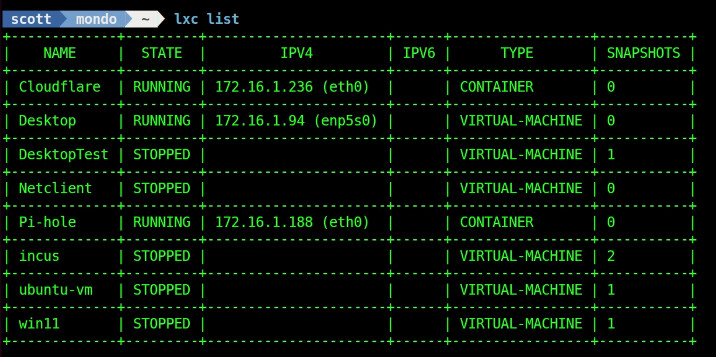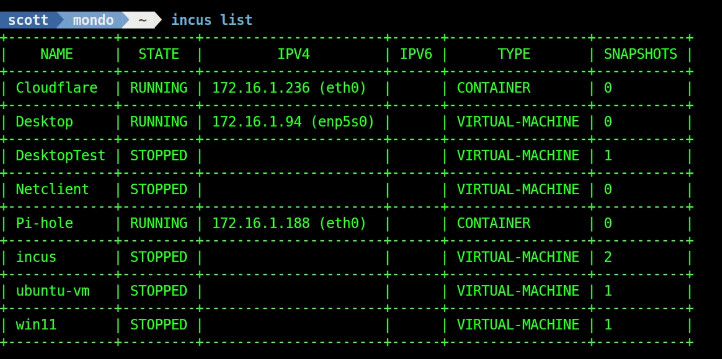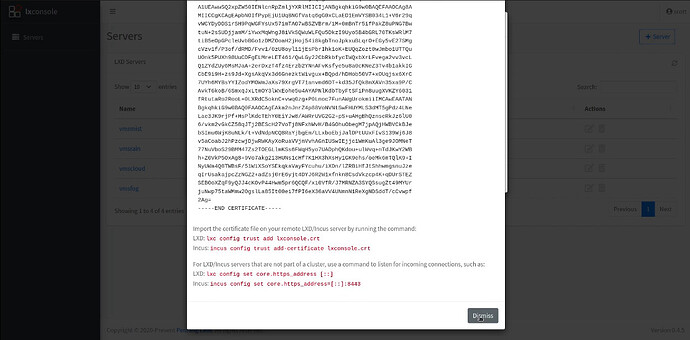If you have an existing LXD Server that you would like to convert to an Incus server, then this is the tutorial for you. Incus is the new open source fork of the LXD containerization tool as explained in my video “Incus: The New LXD”.
This video specifically takes an existing LXD server with LXD containers, LXD Virtual machines, LXD Profiles and LXD storage pools and converts it on the fly using an Incus utility called “lxd-to-incus”.
As of February 2024, this tool can convert a LXD 5.0, 5.18, 5.19 or 5.20 server to Incus. As the LXD and Incus forks become more diverse, there is no guarantee that this tool will work in later versions.
Understand that the GUI tool “LXD Dashboard” that I have presented many times on the channel does not support Incus servers and so after migration to Incus this tool will not work. Penning Labs, who developed LXD Dashboard, has a new tool called LXConsole which is a GUI that can manage both LXD and Incus Servers. Watch my video entitled “LXConsole: The New LXD Dashboard” to learn how to install this great utility.
Log into your LXD Server with ssh (substitute your IP address of your LXD server with n.n.n.n):
ssh n.n.n.n
List your containers and perhaps print a screenshot for your records:
lxc list
List your profiles on your lxd server:
lxc profile list
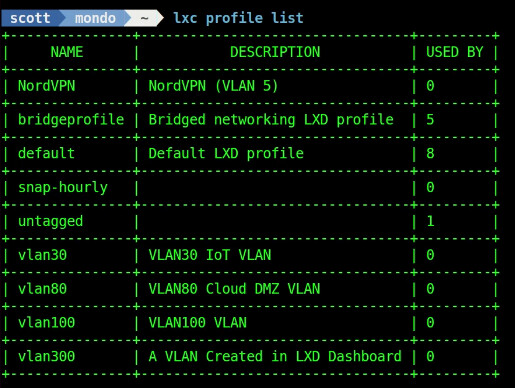
Finally, list your storage pools:
lxc storage list
Check to make sure you have a LXD Version between 5.0 - 5.20:
lxc --version

Install Incus without initializing the installation.
First, change to the root user.
sudo su
Make a folder to hold the installation key(s) (the -p creates the path only if it doesn’t exist):
mkdir -p /etc/apt/keyrings/
Download the Incus key to the folder we just created.
curl -fsSL https://pkgs.zabbly.com/key.asc -o /etc/apt/keyrings/zabbly.asc
Add the repository for Incus using the keys. Cut and paste the entire code segment into your terminal and press enter.
sh -c 'cat <<EOF > /etc/apt/sources.list.d/zabbly-incus-stable.sources
Enabled: yes
Types: deb
URIs: https://pkgs.zabbly.com/incus/stable
Suites: $(. /etc/os-release && echo ${VERSION_CODENAME})
Components: main
Architectures: $(dpkg --print-architecture)
Signed-By: /etc/apt/keyrings/zabbly.asc
EOF'
Update the repositories and exit root.
apt update
exit
Install Incus and the zfs-utils package required for conversion:
sudo apt install incus zfsutils-linux -y
Put your user into the incus admin group and verify:
sudo usermod -aG incus-admin scott
newgrp incus-admin
groups
Now we are ready to convert the LXD Server to an Incus Server with the following command:
sudo lxd-to-incus
In my video, the command above failed and I needed to issue the following command to remove the unsupported core.trust_password mentioned:
lxc config unset core.trust_password
Now I am able to run the conversion:
sudo lxd-to-incus
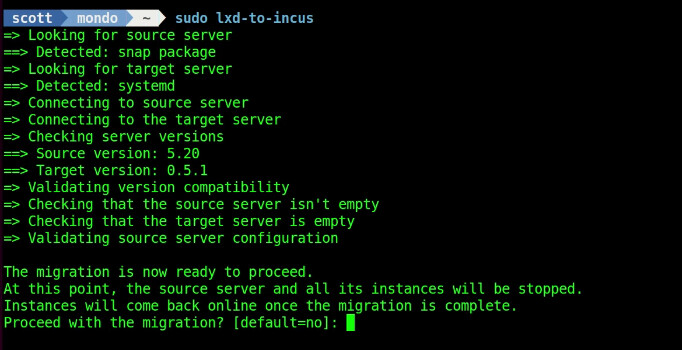
I answer “yes” to the prompt above.
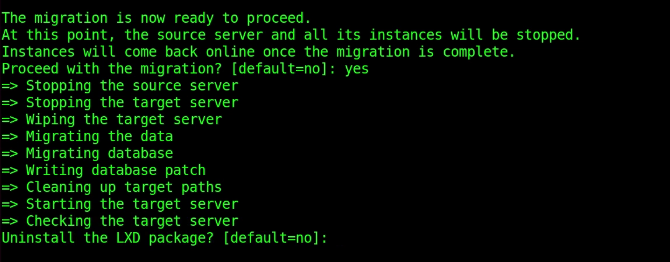
I also answer “yes” to uninstall LXD in the prompt above.

The conversion is now complete. We can now list the Incus containers and we see that all of the LXD containers are now Incus containers.
incus list
We can list the profiles.
incus profile list
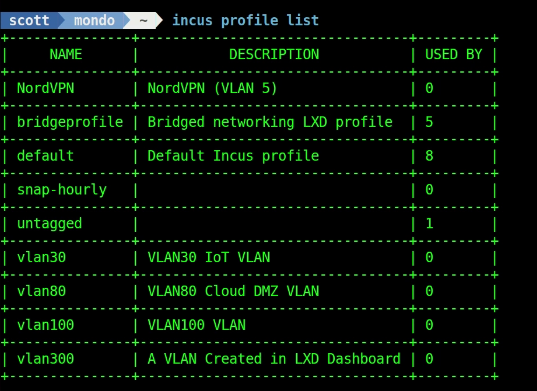
Finally, we can list the storage pool.
incus storage list
In the tutorial, I demonstrated that LXD Dashboard can no longer see or manage your containers because they are in Incus. Assuming you installed LXConsole via my video entitled “LXConsole: The New LXD Dashboard”, the following steps show how I added my “mondo” Incus server to LXConsole since LXConsole can manage both LXD and Incus servers.
LXD Dashboard no longer sees mondo because it is not running LXD:
In LXConsole, I choose the “+Server” option to add the mondo Incus server.
Click on “here” in the previous screenshot which is highlighted in blue.
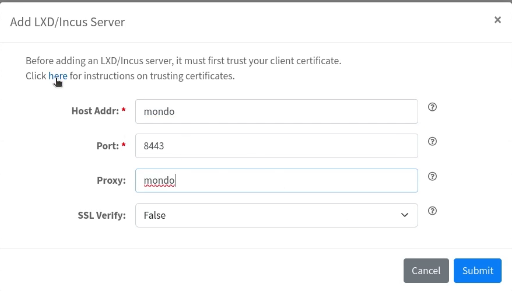
Select and copy the certificate from the page that is displayed being sure to get the Begin and End certificate lines as well.
Go back to the terminal on your Incus Server and edit a file to hold the certificate:
nano lxconsole.crt
Insert the contents of your cut buffer into the nano editor with Shift CTRL V. Do a CTRL O and Enter to write the file out and a CTRL X to exit the nano editor.
Perform the following two commands at the terminal to authorize the ceritifcate on the Incus server and allow access from lxconsole:
incus config trust add-certificate lxconsole.crt
incus config set core.https_address=[::]:8443
Click the “Dismiss” button on the web page as shown below:
Back on the “Add LXD/Incus Server” screen, click submit to now add the server as one that can be managed.
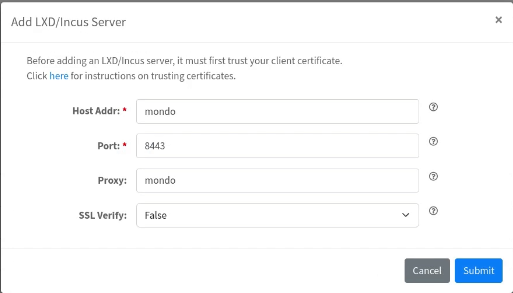
Now I am able to click “mondo” from the server page in LXConsole and I can see all of my Incus containers and manage them.
Enjoy your new Incus Server!
